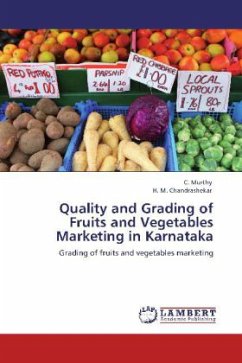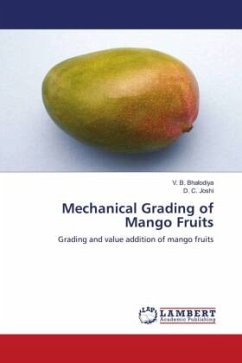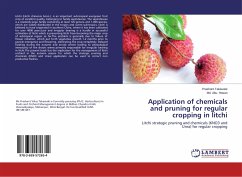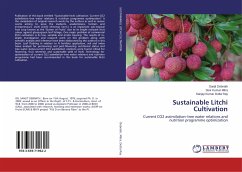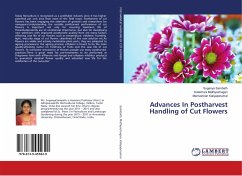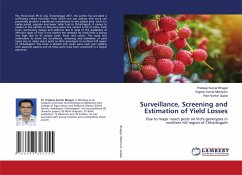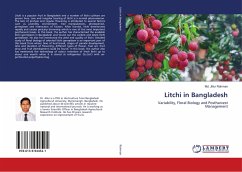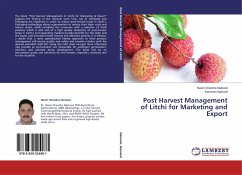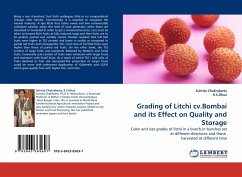
Grading of Litchi cv.Bombai and its Effect on Quality and Storage
Color and size grades of litchi in a bunch,in bunches set at different directions and those harvested at different time
Versandkostenfrei!
Versandfertig in 6-10 Tagen
32,99 €
inkl. MwSt.

PAYBACK Punkte
16 °P sammeln!
Being a non climacteric fruit litchi undergoes little or no compositional changes after harvest. Commercially it is essential to recognize the harvest maturity. A ripe litchi fruit tastes sweet and few commercially cultivated varieties attain this level of taste perfection when those are harvested or marketed.In order to get a remunerative price, care must be taken to harvest litchi fruits at fully matured stage and then fruits are to be graded, packed and suitably stored. Studies revealed that Full Red fruits were higher in TSS content and lower in acidity as compared to partial red fruits an...
Being a non climacteric fruit litchi undergoes little or no compositional changes after harvest. Commercially it is essential to recognize the harvest maturity. A ripe litchi fruit tastes sweet and few commercially cultivated varieties attain this level of taste perfection when those are harvested or marketed.In order to get a remunerative price, care must be taken to harvest litchi fruits at fully matured stage and then fruits are to be graded, packed and suitably stored. Studies revealed that Full Red fruits were higher in TSS content and lower in acidity as compared to partial red fruits and consequently TSS / acid ratio of Full Red fruits were higher than those of partial red fruits. On the other hand, the TSS content of large fruits was maximum followed by Medium and Small fruits. Conversely acid content of fruits were minimum with larger fruits and maximum with Small fruits. As a result of which TSS / acid ratio of fruits declined as fruit size decreased.The proportion of Larger fruits could be more with preharvest Application of Gibberelic acid (GA3) which gave quality fruis with higher brix: acid ratio.



